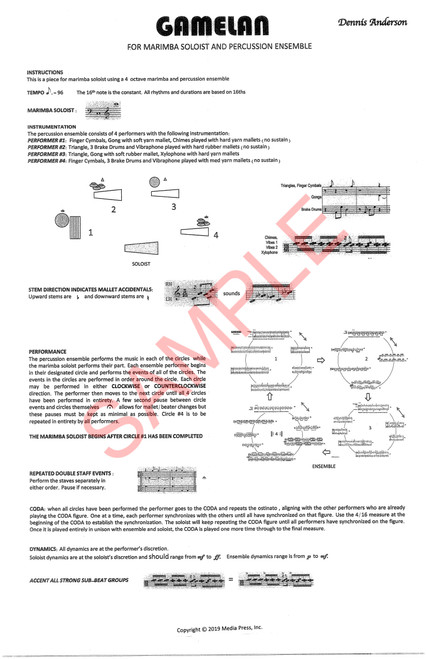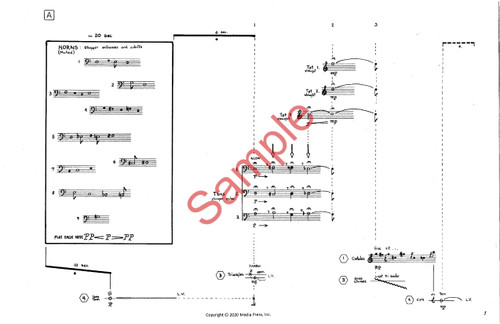Shadow Fantasy for harp and percussion.
Print size: 11 x 17"
Review from Percussive Notes (2022):
This is a complex work for the unique combination of harp and metallic keyboard percussion. Dennis Anderson does a good job of explaining extended techniques (and its respective notation) in the performance notes. The score is a mix of traditional and graphic notation. The graphic notation, like the performance notes, is well-explained. The percussionist is required to interpret two, three, or four staves at once to read notes across changing instruments.
Musically, there are measures with changing time signatures, or no time signatures, populated by various iterations of triplets, quintuplets, sextuplets, and septuplets (including dots and thirty-second notes within these figures). For much of the first half, the two parts line up metrically, so rhythmic precision is paramount. For parts of the second half, graphic notation is more present, including melodic cells in a circle. The players are instructed to start at any cell in the circle and play them all in a clockwise manner followed by counter-clockwise from a different starting point. There are also aleatoric indications, for example, at the end of the piece that dictate how many seconds to spend on each measure.
I recommend this piece for a graduate school or professional recital. It would be a large undertaking to work out the musical, logistical, and timbral requirements put forth by the composer. Additionally, in our digital world, it is surprising that there is not any material (audio clip, video performance, etc.) to be found online. However, the unique combination of instruments and musical possibilities make this piece worthwhile.
—Justin Bunting







